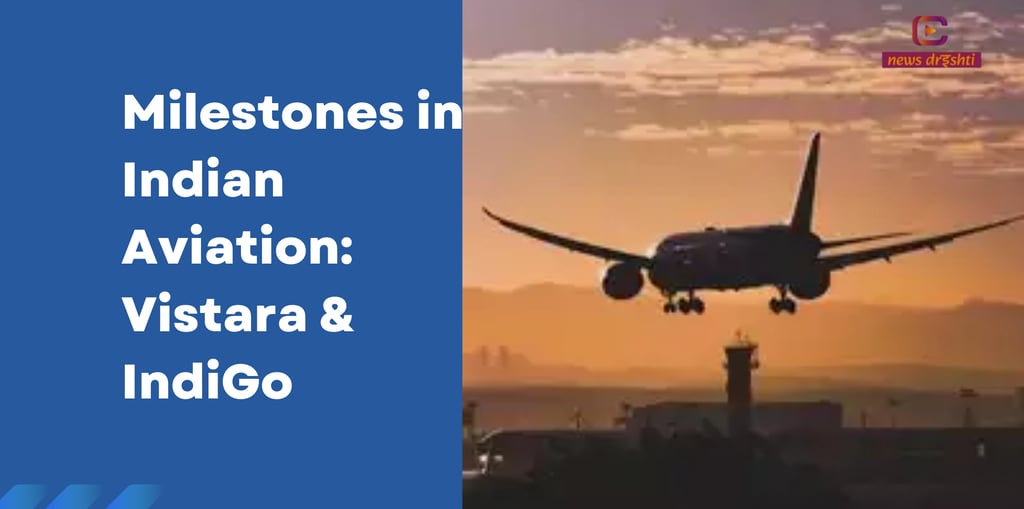Milestones in Indian Aviation: Vistara & IndiGo
This week, Indian aviation witnesses a significant transformation with Vistara's final flight before merging with Air India, enhancing its premium offerings. Additionally, IndiGo enters the business-class market on select routes, reshaping competition in this fast-growing sector.
BUSINESS


This week marks a significant transformation in Indian aviation, with two major milestones that will reshape competition in one of the world's fastest-growing markets. On Monday, Vistara, the joint venture between Tata Group and Singapore Airlines, will take its final flight before merging with Air India, ending a two-year transition marked by complexity and challenges. Just days later, IndiGo, the market leader, will debut business-class cabins on select routes, marking its entry into the premium travel space for the first time.
For Air India, the absorption of Vistara brings an opportunity to enhance its premium service offerings. Vistara's reputation as a full-service, quality airline has made it a preferred choice among business travelers since its 2015 launch. The merger is part of Tata Group’s strategy to position Air India as a globally competitive airline capable of serving both international and premium domestic passengers. However, this consolidation presents several challenges, including managing pilot unrest, synchronizing Vistara’s operations and routes with Air India’s, and retaining loyal Vistara customers as the brand folds into Air India.
While Tata Group aims to revive Air India’s image with Vistara’s assets and reputation, IndiGo, operated by InterGlobe Aviation, is moving into new territory. With its recent launch of business-class services, IndiGo is shifting away from its traditional budget-friendly model. This venture into premium service is part of IndiGo’s strategy to capture a broader market segment and directly compete with Air India for high-end travelers. With over 300 aircraft and a dominant market share, IndiGo’s shift could disrupt Air India’s plans, challenging its ability to maintain its edge in the premium segment.
The rivalry between Air India and IndiGo is now seen as a “two-player game,” where each move by one airline influences the strategy of the other. While IndiGo’s expansion into premium offerings marks a notable departure from its no-frills model, Air India’s focus will be on successfully integrating Vistara’s operations without alienating its current customer base.
As Vistara’s name exits Indian skies, aviation enthusiasts and frequent flyers are left with mixed emotions, mourning the brand's legacy while anticipating Air India’s new era. Meanwhile, Air India faces the pressure of proving Tata Group’s capability to manage one of the most complex mergers in the global aviation industry. The stakes are high: IndiGo’s efficient low-cost operations and ambitious growth could significantly challenge Air India, while Air India’s performance in integrating Vistara will determine its success in redefining itself as a top-tier airline.
In this reshaped landscape, the competition is intensifying. How Air India manages its dual challenge—balancing Vistara’s legacy with a renewed focus on premium services while countering IndiGo’s market reach—will be crucial for the future of Indian aviation.
